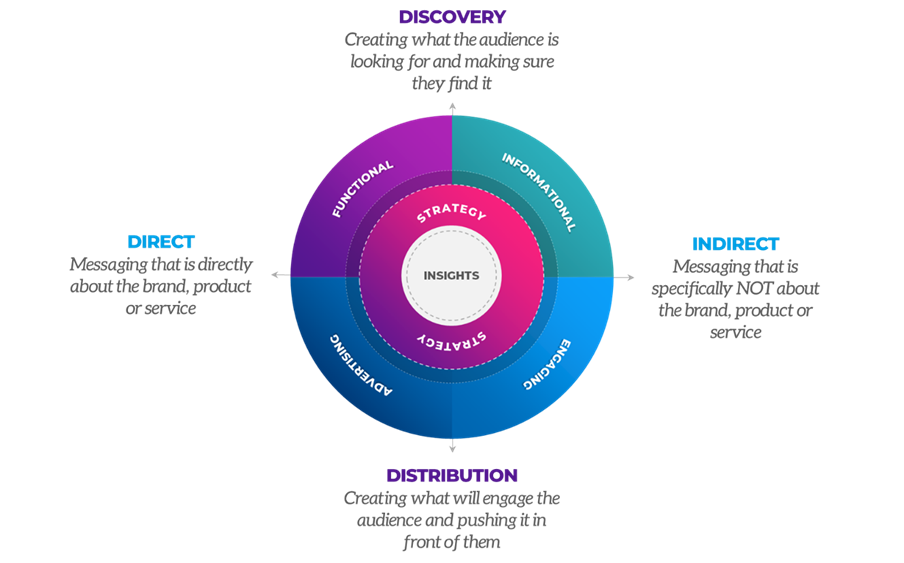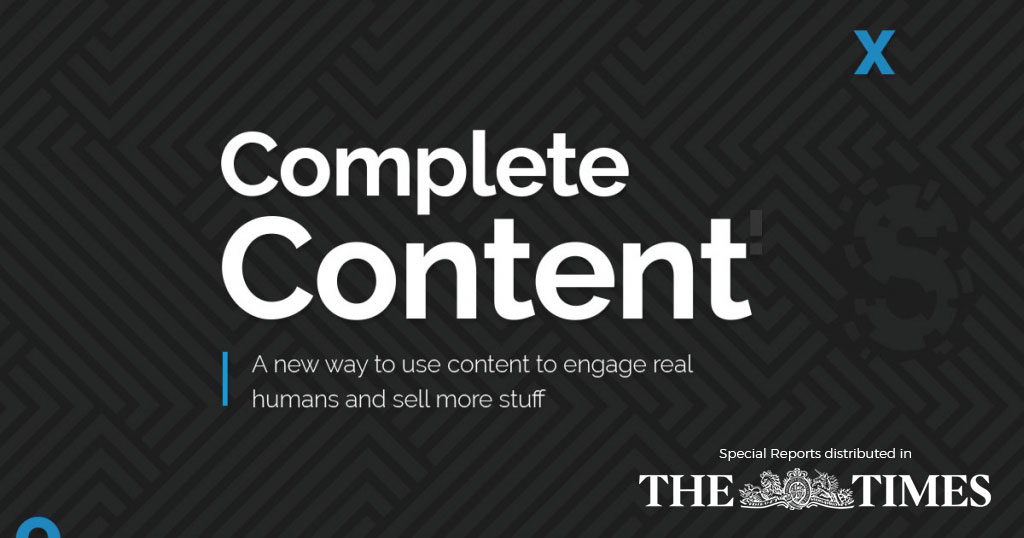Ask 100 people what “content” means, and you’ll get 100 different ideas. I know this, because when that very question was posed on LinkedIn, the great and the good of the marketing world couldn’t decide between them what “content” actually was. A simple word, with seemingly hundreds of different meanings and interpretations.
Right there, published online for the world to see, was perhaps the biggest problem that content marketing faces.
Because marketing is a world in which we have more than our fair share of cynics. These cynics have seen “next big thing” come and go more times than they care to remember. They have heard countless proclamations made upon a conference stage, only for them to never materialise. They also have a tendency to hold the purse strings in this industry and if the people who supposedly know “content” can’t decide between themselves what it actually means, what chance do we have to win over those cynics?
Because content is powerful; we just don’t seem to be able to convey how and why it is powerful. Even though content has been around with us since the dawn of language itself, we are still in a position where too many of us cannot emphatically say how our content has made a contribution to an organisations goals and objectives.
Content has become everyone’s business
When we dig deeper into why this is, and why so many people have different opinions on content, is starts to become apparent. Everybody has a different opinion on content, because everyone is using content for different reasons.
Because whatever we do, it seems that content is becoming a bigger and bigger part of our respective job remits. Branding teams use content for brand awareness, ecommerce teams use content to make sure that products can be found and to improve conversions rates, paid media teams use content to maximise the impact of their advertising activity and even the customer services team uses content to help your customers find the answer to their query.
Every team, at some point, uses “content” to support the business function that they are responsible for. Is it therefore any wonder that we can’t agree on what “content” is?
But it is this individual or ‘silo’ approach to content that is at the root of this issue. We are all working away on our own priorities, our own micro-metrics and our own KPIs, and yet when it comes to the question about the bottom line, we don’t have the answer. Because for all of the resource that gets ploughed into ‘content’, nobody is bringing it all together and understanding what the return on that investment is.
We’re missing the ‘complete’ purpose of our content
This individual ‘content for KPIs’ approach just isn’t sustainable. Not just because we have to try and win over those cynics, but because this approach simply isn’t compatible in an age where terms like ‘omni-channel’ and ‘digital transformation’ are increasingly becoming part of the marketing lexicon.
Put simply, when different departments are producing content for different ends, at different paces, and for different stages of the customer journey, it becomes almost impossible for a brand to deliver a joined-up, multi-channel, multi-device customer experience. So we need to change how we think about content and the purpose it serves.
Which brings us to the concept of ‘Complete Content’; a concept that is designed to strategically join those multiple and competing demands for content. By moving away from a culture that sees different departments creating content for their own ends, at their own pace and inadvertently creating those content vacuums, organisations can start to think about the true commercial purpose of content in whatever form it takes.
A complete approach to content strategy
That process starts by really understanding how your target audiences engage with branded content – what they look for, what they’re receptive to and what actually addresses their wants and needs. When we understand these needs, how audiences use content to satisfy these needs and how we as a brand serve those needs, we can start to build a strategic approach to content that is based on the optimal blend of the four key types of commercial content; functional, informational, engaging and advertising.

The optimum ‘blend’ of these content types will ultimately depend on your business objectives and what you want your content to deliver. If you are looking to push your brand message to large quantities of audience, your strategy will most likely focus on direct messaging content that requires heavy distribution. If, however, you are looking to make the brand more visible in organic search or address more nuanced customer queries, more indirect content types that requires less of a paid push may be more appropriate.
Remember that not all content needs to make a huge splash, generate masses of retweets and becomes a viral sensation. Effective content could be something as simple as a FAQs page that answers a common query that would have otherwise resulted in a call to your already over-burdened call centre. That is one example of a simple piece of content having a clear and measurable commercial return.
Why a complete content approach makes content much more powerful
Content has, in some respects, become a victim of its own success. It has become something of a departmental arms race, where every department is banging on the door of the CMO asking for additional budget and resource to create content for their own ends. But when those ends are often so detached from the needs of other departments, and when the return on the investment in content is so poorly defined, is it any wonder that those very CMOs are perhaps finding the queue outside their office somewhat wearisome?
Complete Content is a model that allows content teams and stakeholders to remove their respective blinkers and instead, think much more about the overall commercial value of their content, about the needs of the audiences that they are trying to reach, and about the overall objectives about the organisation.
And when we start to think about content in those terms, our content becomes much more powerful. That’s what will ultimately win over the cynics.
Download the eBook

Do you struggle to make sense of your content strategy – what it is, what it’s for, and why it matters?
Complete Content gives you a new, data-driven, content-led framework for engaging your consumers in a omni-channel world. Download this ebook and we’ll help you work out:
- exactly what types of content you should create;
- which channels you should use to put your content in front of your target audience.
Fill in the form now and be one of the first to discover the how to use content to engage real humans and sell more stuff!
